Muskrats and beavers are similar in many ways which is surprising since they aren’t even close relatives. Muskrats are more closely related to voles and lemmings than to beavers.
Both are semiaquatic rodents that slap their tails when alarmed. However, a beaver’s tail is flat like a paddle and a muskrat’s tail is like a rat tail–scaly and nearly hairless.
Both are able to swim underwater for over 15 minutes and also feed underwater. Muskrats and beavers can both close their lips behind their incisor teeth to harvest food underwater but they feed on different food. Muskrats eat aquatic plants such as cattails and bulrush, including the shoots, bulbs, roots, tubers and leaves. They will also eat the occasional small fish, snail or turtle. Beavers eat bark, twigs, leaves, roots and green vegetation, which can include sedges, grasses and pond lilies.
Like beavers, muskrats build lodges except that their lodges are made of cattails and sedges, not sticks. Muskrats build in shallow water and access the nest chambers via underwater tunnels like beavers. A muskrat lodge is smaller than a beaver lodge with a diameter of six to eight feet at the base.
Muskrats also excavate burrows in shoreline banks like beavers that live in rivers. Muskrats prefer denning in banks than living in lodges if conditions allow possibly because less maintenance is needed and they are cooler in the summer. Unlike beavers whose den entrances are underwater, a muskrat’s den entrance can be above or below water.
Muskrat lodges can often be found in beaver ponds because beaver dams increase habitat for muskrats by flooding new areas. They are able to occupy the same habitat because there is no apparent competition for food. Muskrats are more commonly found in shallow marshes with abundant cattails verses wooded areas that beavers prefer.
A muskrat has a small home range compared to a beaver, often less than 200 feet in diameter, which is roughly half a football field. Depending on the location a beaver can have a home range of half a mile.
Within that home range, muskrats build a lodge and feeding shelters (sometimes referred to as “push-ups”). During the winter, muskrats build feeding shelters on the ice as a place to feed, rest and warm up. The shelters are constructed by the muskrat pushing various types of debris up through a hole in the ice until it forms a heap that is large enough to include a cavity for the muskrat to sit. When the shelter becomes covered with snow, there is enough insulation to keep the hole in the ice open.
The feeding shelters are built within the dive limits of the muskrat, which is longer in the winter because their oxygen-storing capacity increases by 42 percent. This allows the muskrat more access to submerged vegetation in the winter. Beavers, on the other hand, build a raft of wood near their lodge to feed on during the winter so they don’t have to actively forage.
In the warmer months when both are foraging, it may be hard to see them since they are both nocturnal. Both can be active during the day, especially muskrats on rainy, overcast days, but they prefer to be nocturnal to stay hidden from predators.
Once spotted, there are two major differences that distinguish the two. When swimming a beaver has one hump consisting of its head, neck and upper back or just its head. Whereas a muskrat while swimming has two or three separate humps–its head, its upper back and sometimes its tail.
The other difference is size. A muskrat weighs roughly two-and-a-half pounds, while a beaver weighs between 35 to 70 pounds.

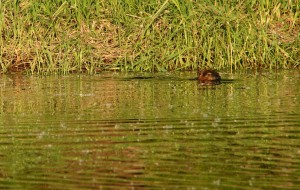
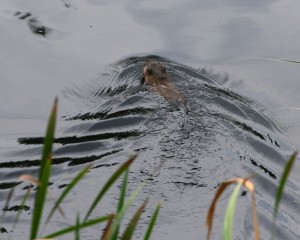
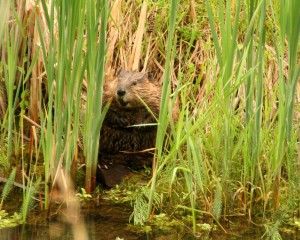
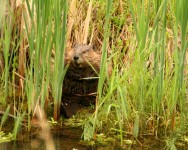
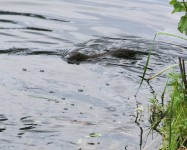
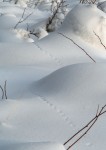
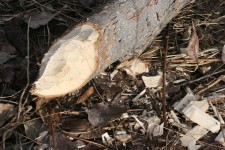
Thank you for this article. I did not know there was a difference between these two animals until I started looking up information on the internet. After seeing a muskrat up close, I thought it looked like a beaver that had a strange looking tail like a rat. There are some really big muskrats out there, that are as big as a small beaver.